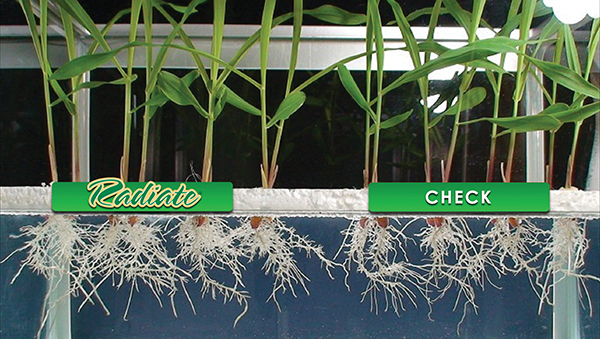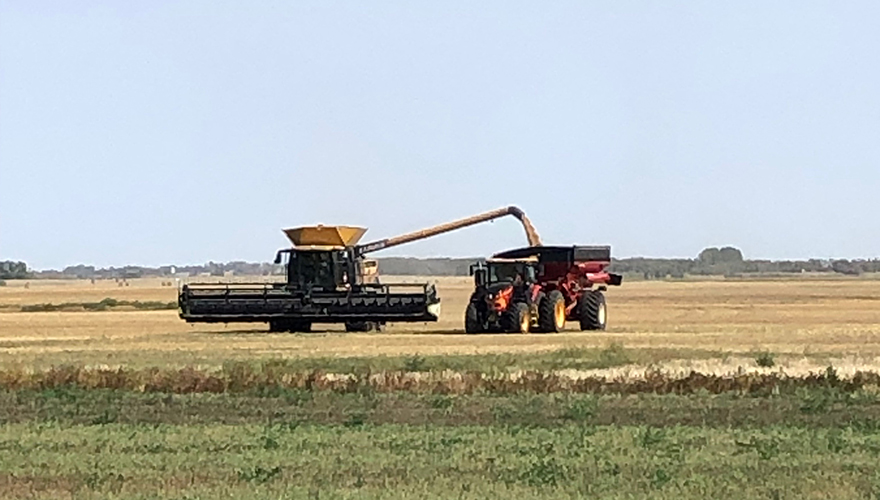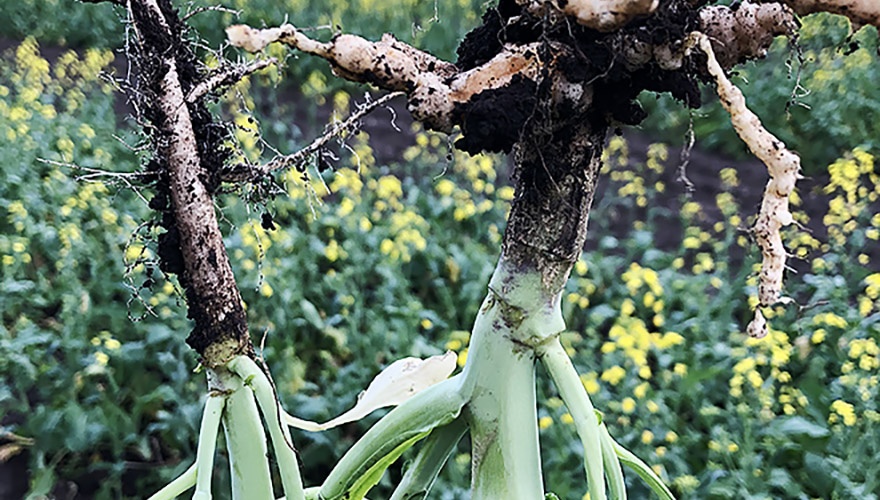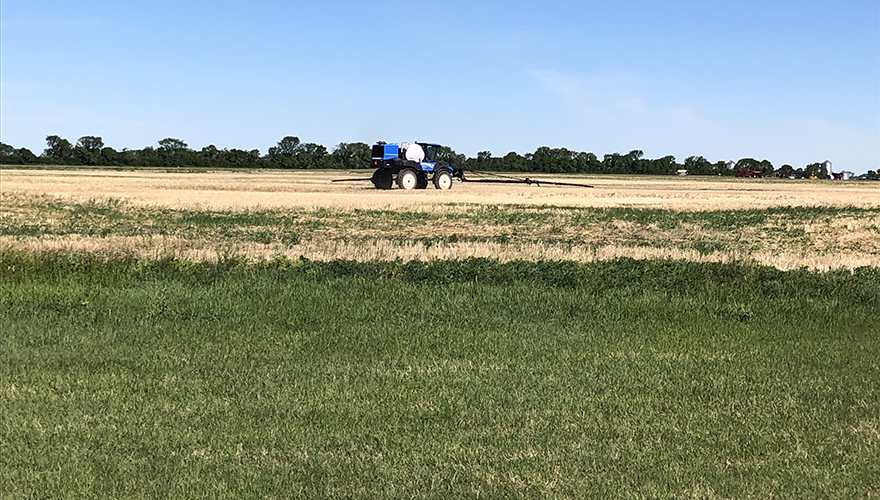Posted April 19, 2017
MIGHTY MESSENGERS
Brought to you by Nutrien Ag Solutions and Loveland Products Canada
Just like in our own bodies, hormones are powerful chemical messengers that result in physiological change. Much is the same in plants, where hormones are responsible for all aspects of plant growth and development. Environmental signals trigger production of these powerful compounds which are produced in the leaves, flowers, shoots, roots or fruits – depending on which hormone is called into action.
There are five major types of plant hormones: auxins, cytokinins, gibberellins, ethylene and abscisic acid. Each hormone has a distinct job and for oilseed, pulse and cereal crops, auxins and cytokinins can greatly improve plant vigor, promote growth of roots and shoots and reduce stress.
AUXINS
Research published in the Prairie Soils & Crops Journal describes auxins, or 3-indolebutyric acid, as a regulator of growth and developmental processes in taller plants. In short, this powerful root, shoot and leaf regulator encourages cells to elongate, which stimulates growth.
Everyone has seen auxins in action, even if they didn’t realize it. If you’ve ever wondered how a plant bends itself toward sunlight, what you are seeing is the auxin in the stem. Auxin is part of cell growth and expansion and is usually found in the parts of the plant that are actively growing, with the highest concentration in the primary stem.
Auxins are most effective when partnered with another hormone. That’s where cytokinins come into play, working alongside to stimulate fast, early nodal root development.
CYTOKININS
Cytokinins are just as important as auxins, especially since levels of both stay relatively even. To put it simply, when auxins are at 50%, so are cytokinins. If one rises to 60%, the other falls to 40% and so on. This balance is used precisely to produce different stages of growth. If the auxin and cytokinin are equal then normal cells produce normally. If the concentration of auxin is higher then roots will form and if the auxin is less, shoots will form.
Cytokinins, including kinetin, are a plant’s version of the fountain of youth. This hormone encourages plant cells (elongated by the auxins) to divide and create new plant organs. It can help plants repair themselves when wounded and slow the natural aging process in order to allow more time for root growth and volume and also will increase the time where roots are most functional. These hormones aren’t able to develop a strong, healthy plant above the ground without a powerful root system to increase nutrient and water intake.

Radiate from Loveland Products vs check variety
YOU CAN’T HAVE TOO MANY ROOTS
There is a lot of competition below ground. Root growth rate, depth, density and total surface area greatly affect a plant’s ability to find and absorb water and nutrients. When there is an overlap of roots from different plants (including grasses and weeds) the root with the most surface area wins.
ROOT HAIRS
Different parts of a root system do different things, but root hair cells are a valuable addition. The more of these microscopic hairs a root has, the more surface area it’s able to occupy. Not only does this ensure the plant’s position in the competition for nutrients, it also increases uptake of moisture and minerals during osmosis.
Most plants produce root hairs that only live a few weeks before they die off. At the same time, new root hairs are continually being formed. Slowing the aging process can vastly increase the number of root hairs that are functional at one time.
MOVEMENT OF NUTRIENTS
Mobile nutrients like nitrate, sulphate, chloride and boron are easy for plants to pick up as the nutrients move through the soil via moisture. Many nutrients are not as easily accessed and rely on roots to come into direct contact with them to draw them out. This process is dependent on the roots to do the work and increasing root growth and root hair cell development increases the chances of coming into contact with nutrients such as phosphate, potassium, calcium, magnesium, zinc and iron which are less mobile.
RECIPE FOR SUCCESS
Root systems are a plant’s lifeline and the use of foliar-applied plant hormone products, particularly when used as a tank-mix partner with compatible herbicides, can give a plant the best chance at success. The bigger and healthier the root system, the bigger and healthier the plant. It has been proven in commercial-scale field trials that the use of these products can promote the growth of roots and shoots, improve early season vigor, enhance a crop’s ability to produce its own natural growth hormones, reduce early season stress with increased healing abilities and overall increase the health of a plant to the benefit of both yield and quality.
It’s all part of taking a good management plan to the next level. Find out more at lovelandproducts.ca/radiate.
FEATURED LINKS
NEWSLETTER
Want to stay caught up in all things agriculture? Sign up for the newsletter and get all the latest news straight to your inbox.
Spring Frost
Posted May 01, 2017





